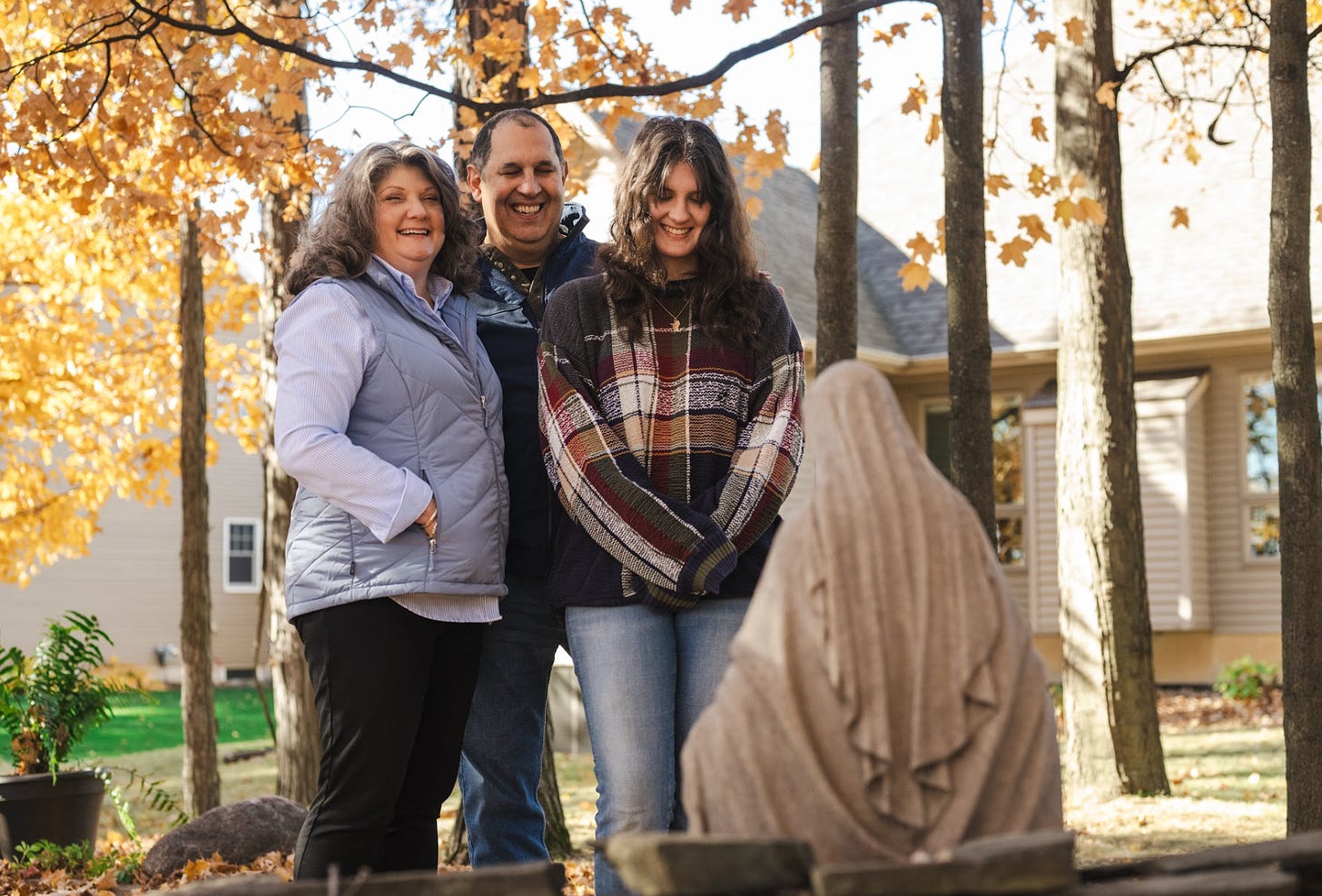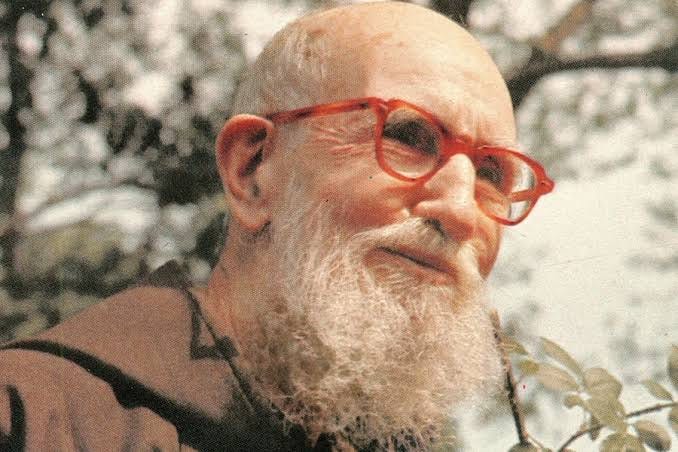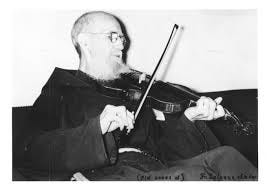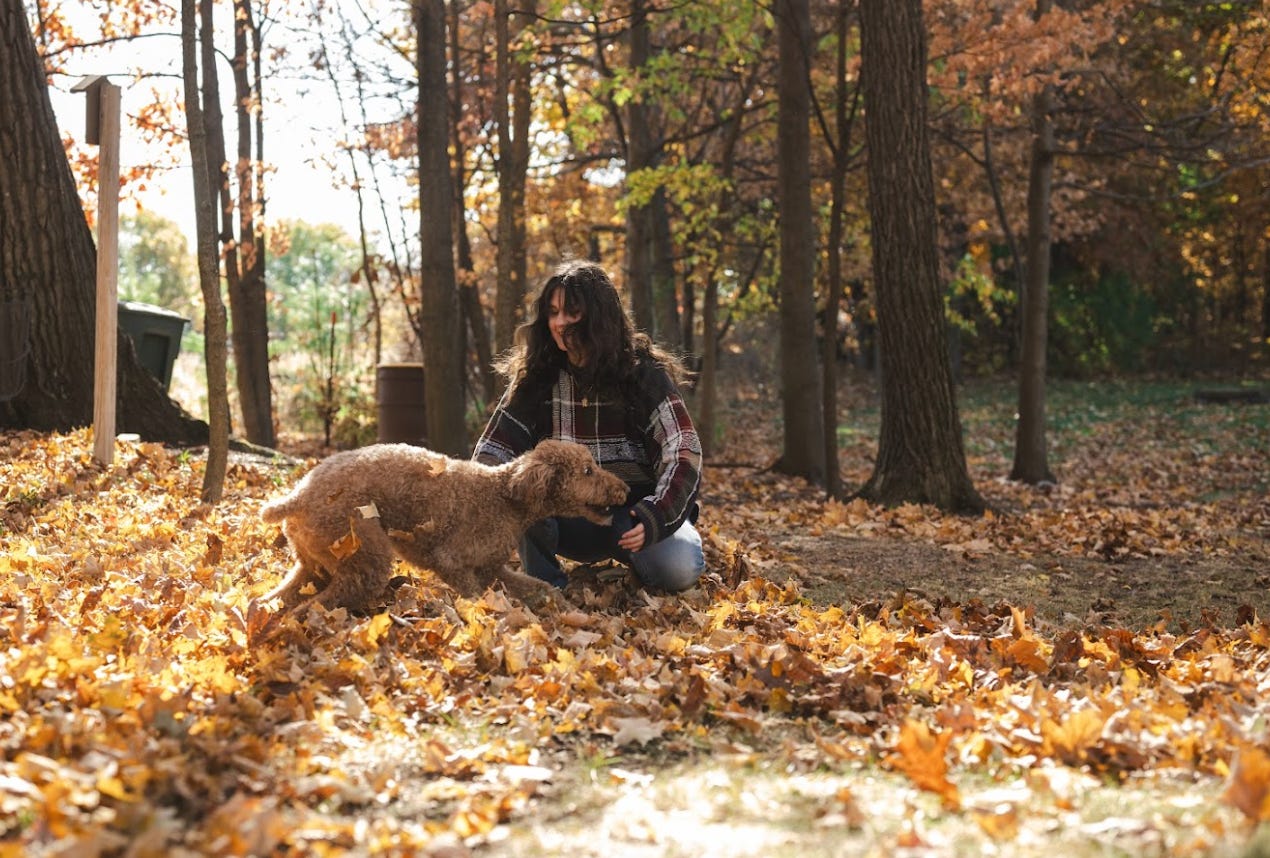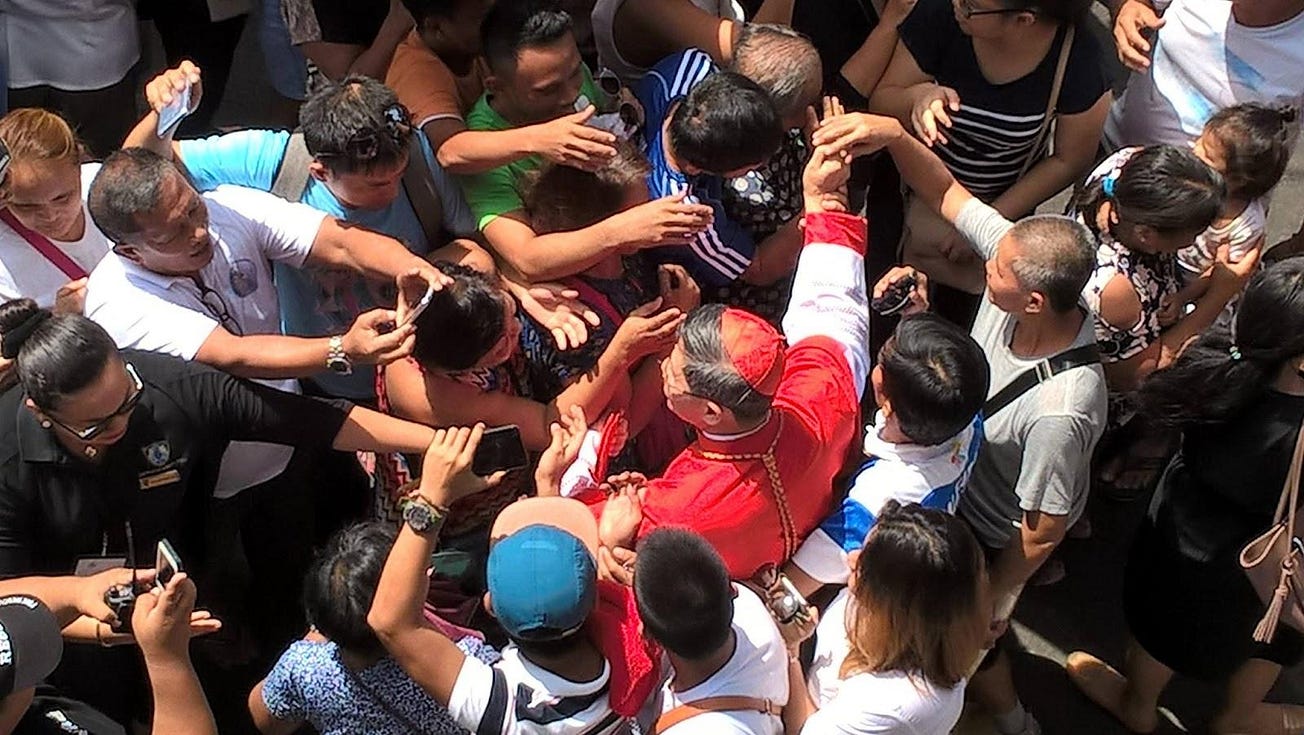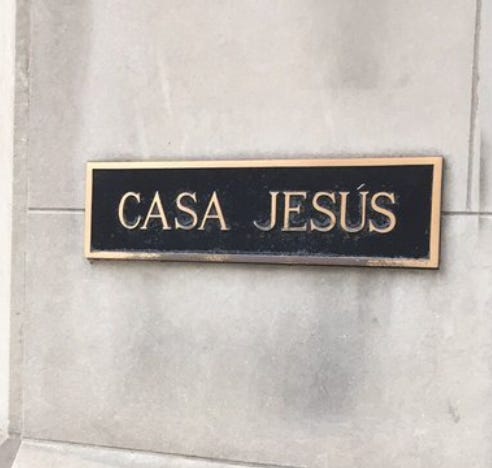Pillar subscribers can listen to this article here: The Pillar TL;DR
A Michigan family says their 16-year-old daughter received an inexplicable healing last summer, and that it could be a miracle worked through the intercession of Blessed Solanus Casey, whose cause for canonization is under consideration at the Vatican.
As an official connected to Casey’s prospective canonization urged caution, the Diocese of Lansing told The Pillar that a possible miracle in the diocese could be a “supernatural shot in the arm for the Church across Michigan and beyond.”
—
Mary Bartold is a high school sophomore from DeWitt, Michigan; she plays softball and likes art.
According to her mother Susan, Mary began experiencing stomach pain late last April. The pain persisted for weeks without getting better. Eventually, the family went to urgent care, and from there were sent to a retinue of doctors and specialists.
But at first, no one had an answer. With no answers, Susan feared that Mary had overian cysts which might rupture — which Susan worried could be fatal, or leave Mary unable to have children.
For weeks, Susan told The Pillar, the family waited, scared, as they worried about a diagnosis, a prognosis, and about the future.
After more than a month of seeing doctors with few answers, medical tests eventually revealed two tumors on Mary’s ovaries. They needed to be removed. Surgery was scheduled for August 2.
The waiting was tough. On July 6 — with almost a month to wait — “I told Rick that I would like to go to the Blessed Solanus Shrine in Detroit,” Susan remembered.
Susan had been there before.
In fact, Blessed Solanus had been a powerful intercessor for her during her own 2019 health scare, Susan said. The family had prayed for his intercession when Susan’s husband Rick had cardiac issues, and Rick had been healed. And decades before that, Susan remembered, when an aunt had been dying, the family had prayed for the intercession of Father Solanus, the midwestern Capuchin beloved across Michigan.
“Being from Detroit ourselves, it’s not unusual that we knew about Solanus Casey long before he was beatified,” Susan explained.
So with Mary sick, “Rick and I went down there and prayed. I was praying for Mary’s peace. And — she’s 16 — so I was praying that she would be open to discussion and to prayer, and of course, I was praying for healing, too.”
“I went with my wheelbarrow!” Susan laughed.
But she prayed especially for prayers.
“In my heart, I thought that if she could at least experience some peace about the situation and some trust in the Lord, that good things would happen.”
They kept up the prayers. And the next week, Susan was grateful that Mary expressed an openness to receiving the anointing of the sick, she said. “That was what I had prayed for to Solanus,” she remembered.
But from Susan’s view, the graces didn’t stop there. Nor did the prayers — friends, coworkers, and priests across the diocese agreed to pray a novena to Blessed Solanus in the nine days ahead of Mary’s scheduled Aug. 2 surgery, Susan said.
On the morning of July 30 — the feast of Blessed Solanus Casey, and three days before surgery — Mary had an ultrasound, to help prepare a medical team for surgery.
Mary was anxious, Susan recalled. So was she. On the drive to the hospital, “I just remember holding onto the steering wheel with white knuckles and just saying, ‘Solanus, this is your feast day …I know you have good news for me.’”
The next day, Susan got a call she says she’ll never forget:
“The doctor told me, ‘I’ve never had the opportunity to make this phone call. Everything is gone. Both tumors are gone.’”
Other doctors confirmed the news. Mary didn’t need the surgery. She didn’t need any treatment at all.
Tumors can disappear ahead of treatment — “spontaneous regression” happens, though rarely — but Susan believes that Solanus’ prayers made the difference for Mary.
“All I can take away from all of this is just to spread the news that prayers are powerful,” Susan said. “Prayers are powerful. And I really don't know …I think about it all the time, that I am so unworthy of the greatness of the Lord that he would use us, our family, in such a spectacular way.”
On Aug. 2, the day Mary had been scheduled for surgery, she went with her mom and dad, and one of her sisters, to visit the Solanus Casey Center in Detroit.
Susan told a woman there what had happened. And soon, she was filling out paperwork connected to the priest’s cause for canonization, explaining the family’s belief that Blessed Solanus Casey’s intercession had healed their daughter.
If the Church eventually agrees, Mary’s healing will be one of many answered prayers from the lips of Blessed Solanus Casey.
A Capuchin Francican beatified in 2017, Bernard Francis Casey was born to a Wisconsin Irish immigrant family in 1870. He was sick as a child, leaving his voice soft and slightly impaired. He had little schooling, and a great deal of hard work on farms and in street trolley yards.
In 1891, Casey entered seminary for the Archdiocese of Milwaukee. But classes were taught in Latin or German, owing to the large German population of the area. Casey didn’t know either. Seminary administrators eventually sent him home, suggesting he join a religious order if he wanted to be a priest.
In prayer, Casey felt a call he couldn’t understand, to Detroit. He applied for the Capuchin Franciscans there, and when he entered in 1897, was given the religious name Solanus.
When he was ordained a priest, it was after tremendous struggles with studies, which meant that Solanus became a “simplex priest” — ordained, but without faculties to preach at Mass or hear confessions.
He lived first in New York, then in Detroit, where he was mostly the friary porter — answering the doorbell when it rang. He spent time with sick people, and gave the friary’s alms to the poor.
Though he couldn’t hear confessions, he became known as a good confidante and a holy spiritual director — his intercessory prayer became reputed as especially effective.
People came great distances to speak with Solanus. And when he died on July 31, 1957 — the same date on which the Bartold’s learned that Mary’s tumors were no longer visible — tens of thousands of people came to mourn him.
From soon after his death, pilgrims came frequently to his tomb, and still do. The Bartolds were among them.
Fr. Edward Foley, the vice-postulator of Solanus Casey’s cause, told The Pillar that when a figure is being considered for canonization, there are often many claims to alleged healing, which have to be weighed carefully by the Church, through a rigorous process involving numerous medical examiners.
“We receive many favor reports, we follow each one up. We send them to board-certified physicians. They advise us about whether we should obtain medical records to pursue further… If [a case] seems to not have a likely medical explanation, then we send it on to Rome to my boss, the postulator general for Capuchins, and then Rome decides what to do with it.”
After it passes a local phase, a case like the Bartolds’ is considered in Rome — at the Capuchin curia and then the Dicastery for the Causes of Saints.
If the Vatican itself decides to make an examination into an alleged healing, “it has to go through a variety of stages. It has to go through seven physicians. It has to go through theologians,” Foley said.
The process is exhaustive, he said, before a recommendation might go eventually to the pope.
And even if the dicastery does recommend a person for canonization, Foley said, it’s not always certain when the pope might decide to act on the recommendation.
“There are so many requests and so many projects” at the dicastery, the priest emphasized. “And the process is a deliberative one. These are long and very deliberative and very thoughtful, and they've got seven physicians and they've got 20 cardinals, and they've got theologians and they all have their input.”
Foley urged caution about drawing conclusions on those processes.
“There’s only one person in the Catholic Church who could call something a miracle, and that’s the pope. And it's often based on many technicalities,” Foley said, noting that evidence of seemingly unnatural healing can be hard to gauge, involve a complicated process, and see evaluations ordinarily take years, if not longer.
“But whatever the Church officially says does not take away [from what people experience], the priest said. “Many people experience miracles which are never officially approved, and I would not want to remove the miraculous from people's lives.”
But while he said he couldn’t comment on the Bartolds’ case, Foley said he understands why Catholics would be eager to talk about their experience of healing.
“I don’t think it’s imprudent that any family or any diocese would want to share a wonderful gift they received,” the priest said. “I don’t think that’s imprudence, I think that’s piety.”
A Capuchin himself, Foley said he understands the growing interest in Solanus Casey, as well.
“Solanus captured people's attention while he was alive. Twenty thousand people showed up to pay respects when he died. And he was a celebrated healer. He was a gifted counselor. He was a door opener — literally and spiritually..”
“He's not a famous mystic. He doesn't have the stigmata. He's a pretty ordinary Irish farm kid who failed out of seminary. People say that anybody in the United States could grow up to be president. I think Solanus demonstrates that anybody in the world can grow up to be a saint.”
—
David Kerr, communications director for the Lansing diocese, agreed.
He told The Pillar that Solanus Casey is beloved across Michigan for good reason, in his view.
“Blessed Solanus Casey wasn't the brightest in his class. He was ordained subject to restrictions, not being able to hear confessions or preach within his monastic community, he held the lowest of places. And yet from that humility, even during his lifetime, people were aware of his great apparent sanctity and his seeming ability to affect miracles from heaven,” Kerr said.
“He's a humble figure and a humble part of this state. Through his prayer and penance — because he did suffer a lot in his life, and he offered that up — great favors were granted seemingly by God through him during his life and after.”
Kerr emphasized that the Bartolds are not the only Michiganders to believe they’ve been healed through the Capuchin’s intercession. Since he began working for the Lansing diocese, “a regular stream of claimed miracles and favors through the intercession of Blessed Solanus Casey have crossed my desk.”
“He was remarkably popular, and remarkably wel- known as a miracle maker during his lifetime up to his death in 1957. That has continued in this part of the world unabated until 2025.”
“Solanus is very often the first port of call in this part of the world: very often the first thing that a person or a family seeking a particular grace will do is to get in the car and drive to his place of burial in Detroit in order to ask for his heavenly help.”
Still, Kerr also emphasized that an alleged miracle undergoes a rigorous process before it can be counted towards a possible canonization. And he said that while the Bartolds have gotten great support in the area, the diocese is waiting for a determination from Rome.
“This is a claim sincerely held by the family, a claim that seems to have a significant degree of supporting evidence. But at the same time, we're not giving it an imprimatur. That is for the legitimate authorities both in the US and particularly in Rome, to assess and to come to their conclusion,” Kerr said.
Still, he added, “people across the diocese are excited. They are grateful. It undoubtedly fosters a greater piety in the people of the Diocese of Lansing, a reminder of the power of prayer … It'd be a remarkable supernatural shot in the arm if Blessed Solanus Casey was canonized in the next few years.”
“And if Mary's case is the one to take the cause of canonization over the line, towards Blessed Solanus Casey becoming Saint Solanus Casey, then it would just be wonderful. It would be humbling if that were the case.”
—
For her part, Susan Bartold told The Pillar she’s hoping Solanus will inspire greater faith in her children, and her family.
“Solanus’ life encompasses what I wish I had known earlier in my own life,” Susan said. “That even answering the door [as Solanus did as a porter] is powerful if you spread the good news, or be kind, or be encouraging, or pray. That success isn’t measured by accomplishments. It’s measured by who we’ve encouraged, or who we’ve introduced to Jesus Christ, or offered a helping hand toward.”
“That's what I hope and pray that it encourages my children to know. And then through that, the people they meet will encounter Jesus Christ.”

